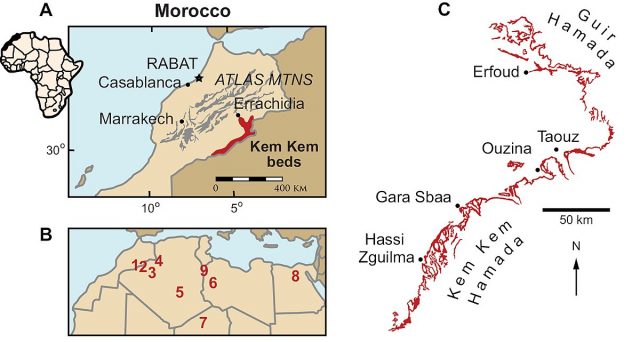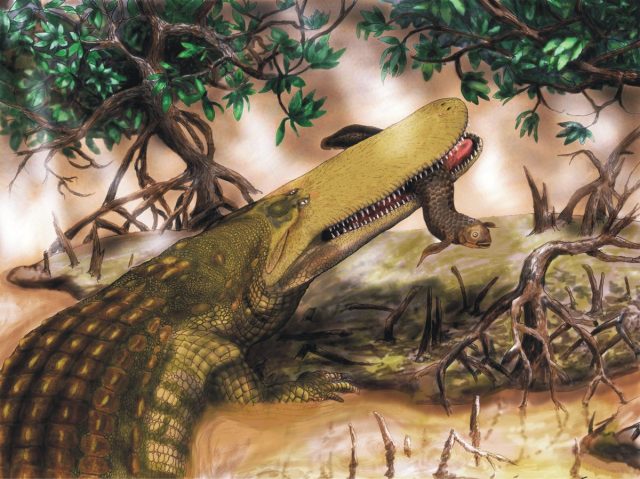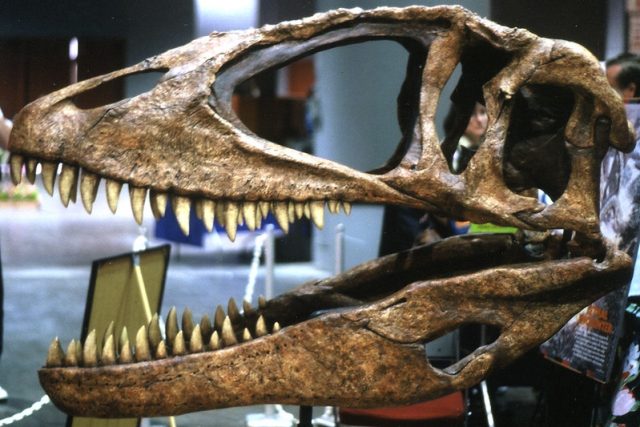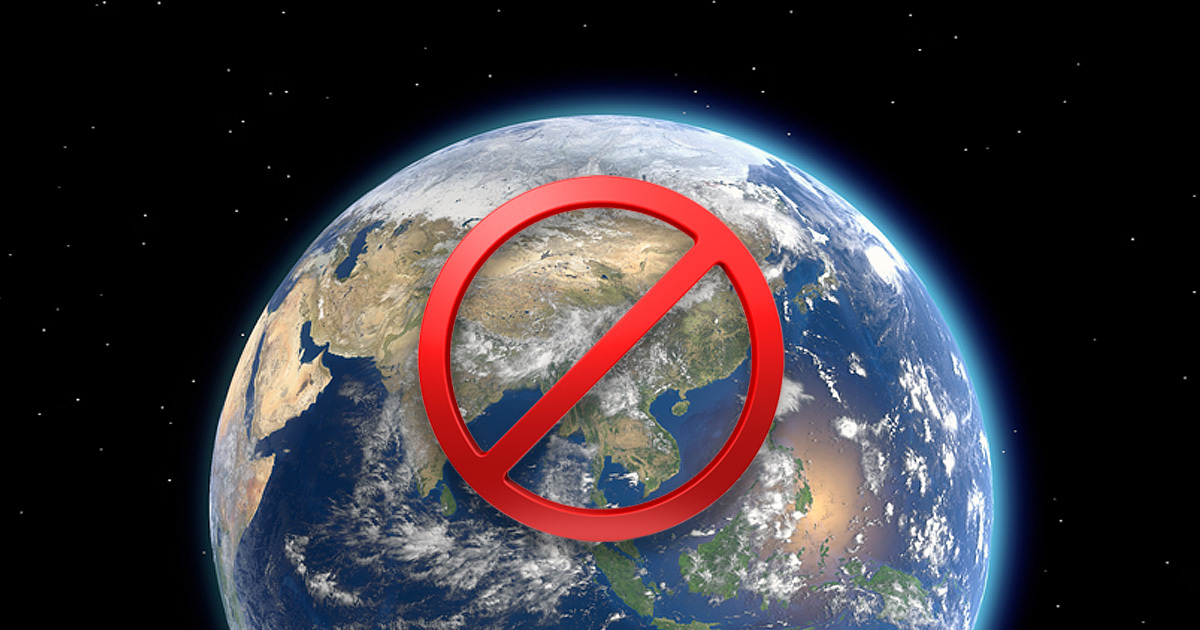A major study into the most dangerous place in history has produced some eye-opening results! Ancient Earth played host to many fearsome creatures. But what about their stomping ground…?
Experts from the University of Detroit Mercy, University of Portsmouth and others have analyzed fossils from the Kem Kem Group, an area of the Sahara Desert in eastern Morocco, North Africa. Their aim was to pinpoint a truly life-threatening destination, and they certainly found one 100 million years back (Cretaceous period).
Building on existing research, the team cast their beady eye over examples in museums across the globe, as well as visiting the locations themselves. A vivid and perilous picture has been painted, bringing to life Africa’s Age of Dinosaurs. As Dr Nizar Ibrahim of Detroit Mercy puts it, the Kem Kem Group was “a place where a human time-traveller would not last very long”.

One element the Group had in abundance back then was water. The website EurekAlert mentions “a vast river system” that nourished the assorted predators in more ways than one. There were rampaging reptiles and ferocious fish… the latter often winding up between the jaws of the former.
ZooKeys, where the findings were published, states: “The Kem Kem vertebrate fauna is biased toward large-bodied carnivores… several large-bodied pterosaurs, and several large crocodyliforms.” It adds, “No comparable modern terrestrial ecosystem exists with similar bias toward large-bodied carnivores.” With so much of the wet stuff, it seems life really did find a way, to quote Ian Malcolm in Jurassic Park. The area was exclusive but deadly! Three of the biggest dino predators ever recorded could be found wandering around the Kem Kem.

Real life movie monsters from this period included the Carcharodontosaurus, a theropod known for its sabre teeth, which measured a terrifying 8 m in length. It could move at a reported top speed of 20 mph. Unwary prey might come face to face with a Deltadromeus raptor. This was the same size as the Carcharodontosaurus – though raptors are associated with sleekness and speed, the Deltadromeus has an estimated weight of just over an imperial ton (or 1050 kg). Someone would be in as much danger if it fell on them, never mind them falling foul of those vicious claws!

Pterosaurs – classified as separate from dinosaurs – are described as “basically giant flying crocodiles” by IFL Science. Should a moveable meal wish to hide from one by diving into the river, further threats lay in wait. For example Portsmouth’s Prof David Martill is quoted by EurekAlert, referring to “an enormous freshwater saw shark called Onchopristis with the most fearsome of rostral teeth, they are like barbed daggers, but beautifully shiny”.
https://www.youtube.com/watch?v=JuYo5-YuAoM
On a more restrained note, the study of the most dangerous place in history helps paleontologists and others view the landscape of Africa through a fresh perspective. Such is the significance of the team’s findings, the place has had a name change. What was once the Kem Kem Beds is now the Kem Kem Group. According to EurekAlert, this “consists of two distinct formations, the Gara Sbaa Formation and the Douira Formation.”
In more recent times, the danger has come from Man rather than dinosaur. Science Alert writes, “The site’s existence has long been known, and not only to palaeontologists, but also to commercial fossil hunters”. This sad fact means “the plundered remains of many of these ancient dinosaurs, reptiles, and other creatures are now scattered far and wide across the globe in private collections.”
Related Article: A Huge Asteroid or Ancient Volcano – What Really Wiped Out the Dinosaurs?
This study of the most dangerous place in history is the first of its type since Ernst Freiherr Stromer von Reichenbach produced his examination in 1936. It’s taken nearly a century but this latest chronicle of carnage doesn’t disappoint. Not only does it give thrill seekers an insight into what life must have been like during the Cretaceous, it also depicts ancient history in all its majesty…
